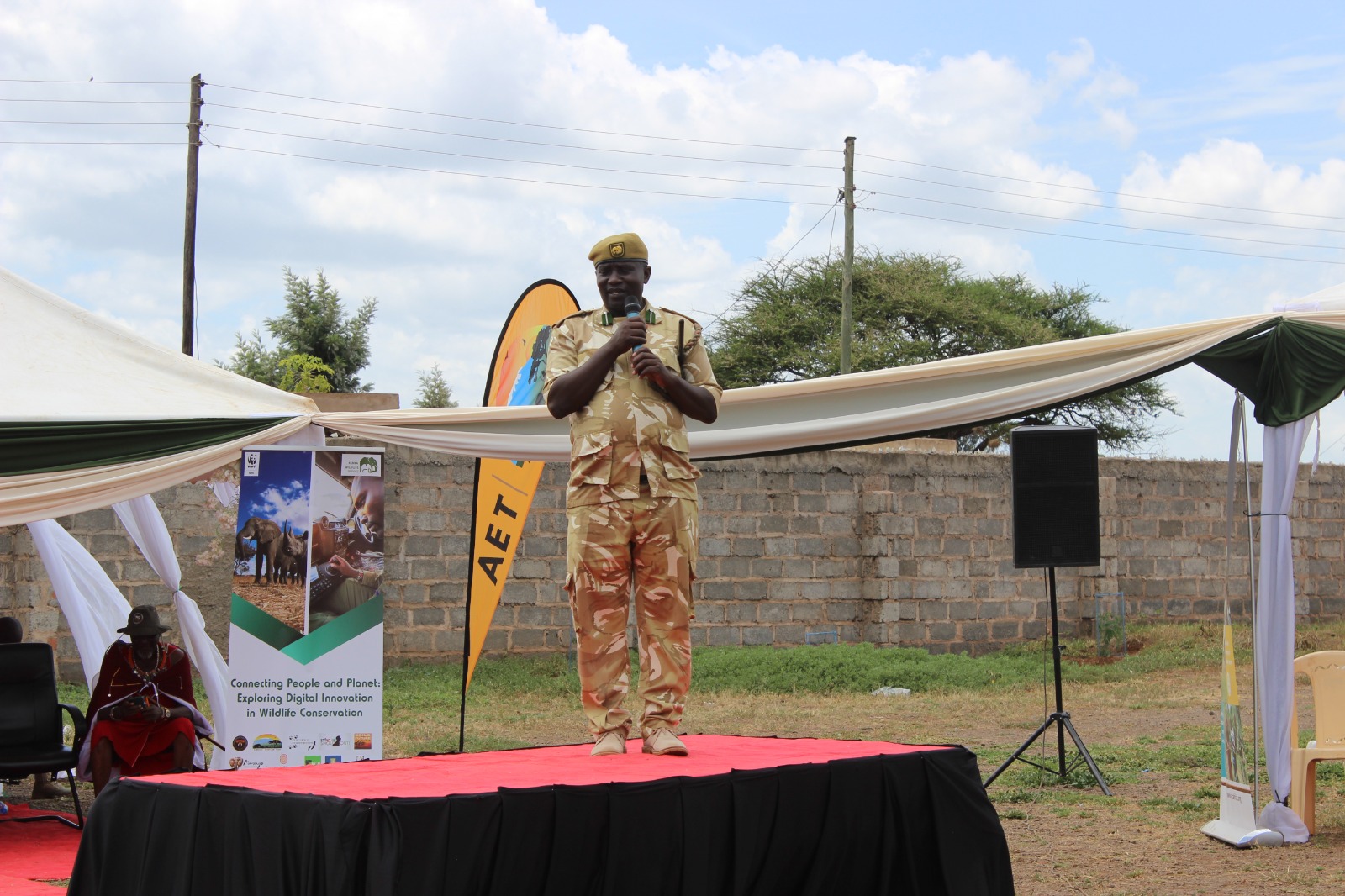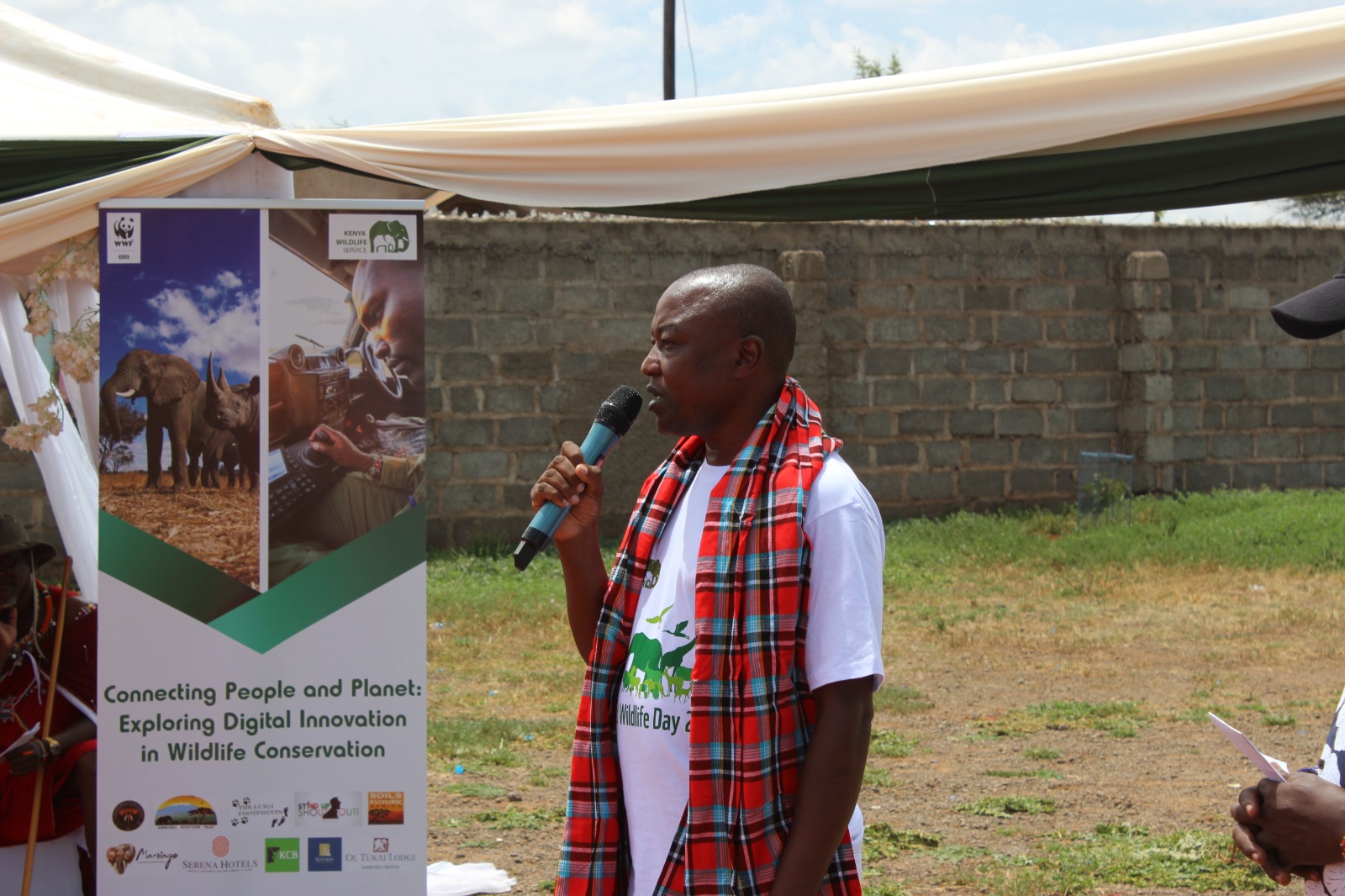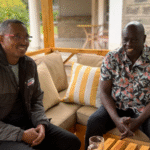Kenya joined the world in celebrating World Wildlife Day in a colourful ceremony held in Kimana, Kajiado County.
This year’s theme ‘Connecting People and Planet: Exploring Digital Innovation in Wildlife Conservation’ is particularly relevant in today’s digital age, where technological advances can offer novel solutions to long-standing conservation challenges.
Speaking to KBC Digital, Amboseli National Park Assistant Director Paul Wambi said technology has played a key factor in wildlife conservation.
“The use of technology has helped conservationists and communities to promote sustainable practices that can help conserve biodiversity and raise public awareness when it comes to preserving nature,” he said.
In addition, Wambi noted that technology is used to collect and collate data, carry out research and monitor wildlife.
“When it comes to managing and conserving wildlife, KWS is very active in using technology in our operations. Currently, we are using the technology to monitor human-wildlife mitigation using collars, in surveillance using camera traps and carrying out census using drones,” he said.

Moses Saruni who hails from Alamaiyana village which borders Amboseli National Park says that technology has played a significant role in solving human-wildlife conflict within the ecosystem.
Amidst some laughter, Saruni gleefully says that before technology, relaying word of an attack in a homestead would take too long hence incurring massive livestock losses, in return, the community members would retaliate by killing the animals.
“A few years back, if you had to raise alarm that your homestead is under attack by hyenas or lions, you would have to light a fire to attract the attention of the neighbouring village as you cause commotion to attract their attention. By the time help arrived, the wild animal would have already made away with some livestock. We would then, out of anger, kill the wild animals to protect our herds, ” he said.
According to Saruni, help is now a phone call away. He also adds that the KWS is currently monitoring problematic wild animals that are prone to attacking their homes.
“With KWS monitoring the animals using advanced technology, attacks and losses are avoided well beforehand. The service makes sure that the wildlife does not encroach too close to our homes which are 200km away from the park, and if they do, they swiftly respond before damage is done,” he avers.
According to Dr John Kioko, Programme Coordinator-Amboseli-Chyulu Sub landscape WWF-Kenya, technology is only half the solution in wildlife conservation.
Dr Kioko says that to achieve maximum results in conservation, there has to be collaboration between conservationists, the government and the community members who are the major stakeholders.
“Knowledge on how to use gadgets in conservation should not only lie with scientists but the community members who are on the frontline of this fight,” he added.

Dr Kioko emphasized that “through education, advocacy, and action, individuals, communities, governments, and organizations worldwide are encouraged to work together to safeguard the planet’s rich and diverse wildlife for future generations.
Each year, World Wildlife Day is celebrated with a theme that highlights the importance of various aspects of wildlife conservation. For example, themes have focused on sustaining all life on Earth, marine species, and big cats.
This initiative aims to raise awareness about the pivotal role that digital conservation technologies and services can play in promoting sustainable wildlife trade, ensuring legal compliance, and fostering harmonious human-wildlife coexistence for the present and future generations.
At a time when the digital revolution is reshaping the landscape of global connectivity, this theme underscores the urgent need for universal access to digital tools and knowledge.
Wildlife contributes to the biodiversity of an ecosystem. Biodiversity is vital for the stability and resilience of ecosystems, enabling them to recover from disturbances, resist diseases, and adapt to changes.
Each species, no matter how small, plays a role in the ecosystem, contributing to the complex interdependencies that sustain life.
The post Kenya explores digital innovations to solve human-wildlife conflict quagmire appeared first on KBC.
kbc





